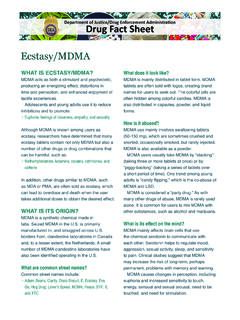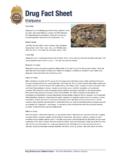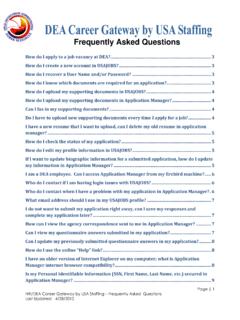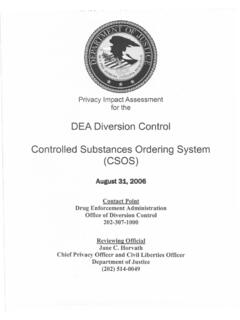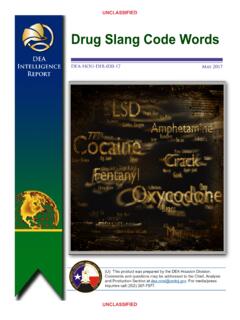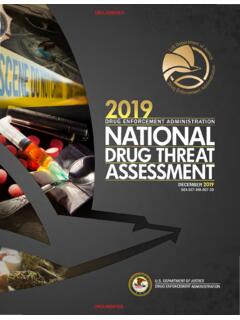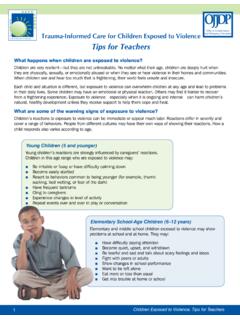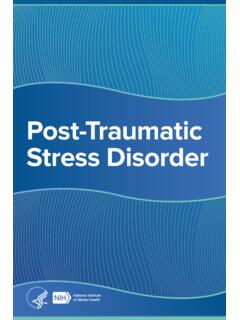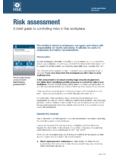Transcription of Preventing Marijuana Use Among Youth & Young Adults
1 Preventing Marijuana USE Among Youth & Young Adults Preventing Marijuana USEPREVENTING Marijuana USEAMONG Youth & Young ADULTSThe Drug Enforcement Administration s (DEA) primary mission and responsibility is to enforce the nation's federal drug laws. But the DEA also has a responsibility to educate the public about the dangers and consequences of drug abuse based on facts and scientific evidence. The DEA is especially concerned about Marijuana use and its negative consequences Among Youth and Young Adults . This publication provides an overview of the prevalence of Marijuana use Among this population; the physical, academic, and social consequences; tips for how to get involved to prevent Marijuana use Among Youth and Young Adults ; and federal resources to assist in your efforts.
2 SCOPE OF THE ISSUE Marijuana Use in the United States In 2015, more than 22 million Americans aged 12 or older were current users of Adolescents aged 12-17: million Young Adults aged 18-25: million Adults aged 26 or older: M M M Marijuana Use Among Youth In 2015, percent of adolescents aged 12 to 17were current users of Marijuana , which meansapproximately million adolescents usedmarijuana in the past The percentage of adolescents in 2015 whowere current Marijuana users was similar to thepercentages in most years between 2004 and Marijuana Use Among College Students Daily or near-daily Marijuana use has increased in recentyears for college students.
3 Rising from percent in2007 to percent in This means one in every 22 college students usesmarijuana daily or near Almost 38 percent of college students said they usedmarijuana in 2015, compared with 30 percent in Since 2003, 19- to 22-year-olds seeing regular marijuanause as dangerous to the user has declined sharply, from58 percent in 2003 to 33 percent by 2 Changes in Perceived Risk A large majority of 12th graders perceive that regular use of any illicit drug presents great risk of harm for the In 2015, 85 percent of 12th graders perceived great risk of harm from regular use of heroin (85 percent), crack (81 percent), cocaine (79 percent), and LSD (61 percent).
4 3 Among the illicit drugs, Marijuana has the lowest perceived risk, with approximately one-third (32 percent) thinking regular use carries great Substantial proportions of 12th graders view even experimenting ( , using once or twice) with most of the illicit drugs as risky. But only 12 percent of 12th graders see experimenting with Marijuana as entailing great Only 32 percent of 12th graders perceive risk of harm from regular Marijuana use, which is its lowest level ever. Between 2006 and 2015, perceived risk of regular use generally declined, while current use ( , past 30 days) rose steadily, at least through KNOW THE FACTS Marijuana is addictive.
5 Research suggests 30 percent of users may develop some form of problem use, which can lead to dependence and People who begin using Marijuana before age 18 are 4 to 7 times more likely than Adults to develop problem Marijuana has short-and long term effects on the brain. When Marijuana is smoked, the mind-altering chemical tetrahydrocannabinol (THC) passes from the lungs to the Blood then carries the chemical to the brain and other organs throughout the User generally feels the effects after 30 to 60 minutes, including changes in mood, impaired body movement, difficulty with thinking and problem solving, and impaired When Marijuana users begin using as teenagers, long-term effects can include reductions in thinking, memory, and learning 3 Marijuana use can have a wide range of physical and mental effects.
6 Physical effects include breathing problems, increased heart rate, and problems with child development during and after Long-term use has been linked to mental illness in some users, such as temporary hallucinations, temporary paranoia, and worsening symptoms in patients with Marijuana is unsafe if you are behind the wheel. Marijuana is the most common illegal drug involved in auto Marijuana is found in the blood of approximately 14 percent of drivers who die in car crashes, often in combination with alcohol or other Marijuana affects skills required for safe driving: -alertness -concentration -coordination - reaction time5 Marijuana is linked to school failure.
7 Marijuana s negative effects on attention, memory, and learning can last for days and sometimes Students who smoke Marijuana tend to get lower grades and are more likely to drop out of high school, compared with their peers who don t Research shows IQ can be lowered if Marijuana is smoked regularly during the teen 4 The THC content in Marijuana has been increasing since the 1980s. In the early 1990s, average THC content in confiscated samples was roughly percent for Marijuana ; in 2016, it was Smoking or eating THC-rich hash oil extracted from the Marijuana plant may deliver high levels of THC to the Average Marijuana extract contains over 50 percent THC; some samples exceed 80 Exposure to higher THC levels means a greater chance of a harmful reaction.
8 Higher THC levels may explain the rise in emergency room visits involving Marijuana Users can mix Marijuana in food ( , edibles), such as brownies, cookies, or candy, or brew it as a tea. Edibles take longer to digest and produce a high, so people may consume more to feel the effects faster, leading to dangerous Higher THC levels may mean a greater risk for addiction if users are regularly exposing themselves to high What is THC? The primary mind-altering chemical in Marijuana , responsible for most of the intoxicating effect people seek, is delta-9 tetrahydrocannabinol (THC).7 The chemical is found in resin produced by the leaves and buds primarily of the female cannabis plant.
9 The plant also contains over 500 other chemicals, including more than 100 compounds that are chemically related to THC, called Organs in the body have fatty tissues that quickly absorb the THC in Marijuana . Standard urine tests can detect traces of THC several days after use. In heavy Marijuana users, urine tests can sometimes detect THC traces for weeks after use 5 Marijuana as Medicine? The term medical Marijuana refers to using the whole unprocessed Marijuana plant or its basic extracts to treat a disease or The Food and Drug Administration (FDA) has not recognized or approved the Marijuana plant as medicine.
10 However, two FDA-approved medications contain cannabinoid chemicals in pill The FDA requires carefully conducted clinical trials in hundreds to thousands of human subjects to determine the benefits and risks of a possible medication. To date, researchers have not conducted a sufficient number of large-scale clinical trials to show that the benefits of the Marijuana plant (as opposed to its cannabinoid ingredients) outweigh its risks in patients it is meant to But It s Legal Now Currently, eight states and the District of Columbia allow recreational ( , personal) use of Marijuana . To date, 28 states and the District of Columbia allow medical use of Marijuana .
